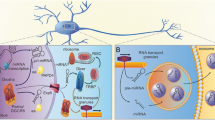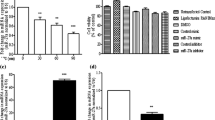Abstract
Toll-like receptors (TLRs) can contribute to central nervous system disease pathologies via recognition of microRNAs (miRNAs); however, it remains to be determined which miRNAs are able to activate this signaling. Here we report that numerous miRNAs induced the production of tumor necrosis factor alpha in multiple myeloid cell types, including microglia, and that this effect was abolished in cells deficient in TLR7. Examination of closely related miRNAs that differed in their ability to activate TLR7 resulted in the identification of a motif (UGCUUAU) in miR-20a-5p and specific nucleotides (all the uridines and surprisingly the cytosine as well) in a key area of miR-20a-5p and miR-148b-3p that were vital for the secretion of cytokines via TLR7 stimulation. A 10-nucleotide sequence including this motif was identified to be the shortest single-stranded RNA to signal via TLR7. An miRNA containing this motif induced the secretion of multiple proinflammatory molecules, which was dependent on the phosphoinositide 3-kinase, mitogen-activated protein kinase, and nuclear factor kappa‐light‐chain‐enhancer of activated B cell signaling pathways. Wild-type mice administered miR-20a-5p, which contained this motif, demonstrated increased leukocyte migration. This effect was significantly ameliorated in TLR7-knockout mice, and mice administered miR-20b-5p, in which the motif was mutated, did not exhibit leukocyte migration. We provide a detailed analysis of miRNAs that activate endosomal TLR7 and identify key nucleotide features of a sequence motif recognized by TLR7.






Similar content being viewed by others
Data availability
The manuscript has no associated data.
References
Ozinsky A, Underhill DM, Fontenot JD, Hajjar AM, Smith KD, Wilson CB, Schroeder L, Aderem A (2000) The repertoire for pattern recognition of pathogens by the innate immune system is defined by cooperation between toll-like receptors. Proc Natl Acad Sci USA 97:13766–13771. https://doi.org/10.1073/pnas.250476497
Kawai T, Adachi O, Ogawa T, Takeda K, Akira S (1999) Unresponsiveness of MyD88-deficient mice to endotoxin. Immunity 11:115–122
Yamamoto M, Sato S, Hemmi H, Hoshino K, Kaisho T, Sanjo H, Takeuchi O, Sugiyama M, Okabe M, Takeda K, Akira S (2003) Role of adaptor TRIF in the MyD88-independent toll-like receptor signaling pathway. Science 301:640–643. https://doi.org/10.1126/science.1087262
Heil F, Hemmi H, Hochrein H, Ampenberger F, Kirschning C, Akira S, Lipford G, Wagner H, Bauer S (2004) Species-specific recognition of single-stranded RNA via toll-like receptor 7 and 8. Science 303:1526–1529. https://doi.org/10.1126/science.1093620
Diebold SS, Kaisho T, Hemmi H, Akira S, e Sousa CR (2004) Innate antiviral responses by means of TLR7-mediated recognition of single-stranded RNA. Science 303:1529–1531. https://doi.org/10.1126/science.1093616
Quinlan S, Kenny A, Medina M, Engel T, Jimenez-Mateos EM (2017) MicroRNAs in neurodegenerative diseases. Int Rev Cell Mol Biol 334:309–343. https://doi.org/10.1016/bs.ircmb.2017.04.002
Colombo M, Raposo G, Thery C (2014) Biogenesis, secretion, and intercellular interactions of exosomes and other extracellular vesicles. Annu Rev Cell Dev Biol 30:255–289. https://doi.org/10.1146/annurev-cellbio-101512-122326
Hu G, Yang L, Cai Y, Niu F, Mezzacappa F, Callen S, Fox HS, Buch S (2016) Emerging roles of extracellular vesicles in neurodegenerative disorders: focus on HIV-associated neurological complications. Cell Death Dis 7:e2481. https://doi.org/10.1038/cddis.2016.336
Blandford SN, Galloway DA, Moore CS (2018) The roles of extracellular vesicle microRNAs in the central nervous system. Glia. https://doi.org/10.1002/glia.23445
Yelamanchili SV, Lamberty BG, Rennard DA, Morsey BM, Hochfelder CG, Meays BM, Levy E, Fox HS (2015) MiR-21 in extracellular vesicles leads to neurotoxicity via TLR7 signaling in SIV neurological disease. PLoS Pathog 11:e1005032. https://doi.org/10.1371/journal.ppat.1005032
Hu G, Yao H, Chaudhuri AD, Duan M, Yelamanchili SV, Wen H, Cheney PD, Fox HS, Buch S (2012) Exosome-mediated shuttling of microRNA-29 regulates HIV Tat and morphine-mediated neuronal dysfunction. Cell Death Dis 3:e381. https://doi.org/10.1038/cddis.2012.114
Liu CG, Song J, Zhang YQ, Wang PC (2014) MicroRNA-193b is a regulator of amyloid precursor protein in the blood and cerebrospinal fluid derived exosomal microRNA-193b is a biomarker of Alzheimer’s disease. Mol Med Rep 10:2395–2400. https://doi.org/10.3892/mmr.2014.2484
Lehmann SM, Kruger C, Park B, Derkow K, Rosenberger K, Baumgart J, Trimbuch T, Eom G, Hinz M, Kaul D, Habbel P, Kalin R, Franzoni E, Rybak A, Nguyen D, Veh R, Ninnemann O, Peters O, Nitsch R, Heppner FL, Golenbock D, Schott E, Ploegh HL, Wulczyn FG, Lehnardt S (2012) An unconventional role for miRNA: let-7 activates toll-like receptor 7 and causes neurodegeneration. Nat Neurosci 15:827–835. https://doi.org/10.1038/nn.3113
Fabbri M, Paone A, Calore F, Galli R, Gaudio E, Santhanam R, Lovat F, Fadda P, Mao C, Nuovo GJ, Zanesi N, Crawford M, Ozer GH, Wernicke D, Alder H, Caligiuri MA, Nana-Sinkam P, Perrotti D, Croce CM (2012) MicroRNAs bind to toll-like receptors to induce prometastatic inflammatory response. Proc Natl Acad Sci USA 109:E2110-2116. https://doi.org/10.1073/pnas.1209414109
Feng Y, Zou L, Yan D, Chen H, Xu G, Jian W, Cui P, Chao W (2017) Extracellular MicroRNAs induce potent innate immune responses via TLR7/MyD88-dependent mechanisms. J Immunol 199:2106–2117. https://doi.org/10.4049/jimmunol.1700730
Han X, Li X, Yue SC, Anandaiah A, Hashem F, Reinach PS, Koziel H, Tachado SD (2012) Epigenetic regulation of tumor necrosis factor alpha (TNFalpha) release in human macrophages by HIV-1 single-stranded RNA (ssRNA) is dependent on TLR8 signaling. J Biol Chem 287:13778–13786. https://doi.org/10.1074/jbc.M112.342683
Bernard MA, Zhao H, Yue SC, Anandaiah A, Koziel H, Tachado SD (2014) Novel HIV-1 miRNAs stimulate TNFalpha release in human macrophages via TLR8 signaling pathway. PLoS ONE 9:e106006. https://doi.org/10.1371/journal.pone.0106006
Bernardes WS, Menossi M (2020) Plant 3′ regulatory regions from mRNA-encoding genes and their uses to modulate expression. Front Plant Sci 11:1252. https://doi.org/10.3389/fpls.2020.01252
Lian H, Roy E, Zheng H (2016) Protocol for primary microglial culture preparation. Bio Protoc. https://doi.org/10.21769/BioProtoc.1989
Yu AM, Choi YH, Tu MJ (2020) RNA drugs and RNA targets for small molecules: principles, progress, and challenges. Pharmacol Rev 72:862–898. https://doi.org/10.1124/pr.120.019554
Ghosn EE, Cassado AA, Govoni GR, Fukuhara T, Yang Y, Monack DM, Bortoluci KR, Almeida SR, Herzenberg LA, Herzenberg LA (2010) Two physically, functionally, and developmentally distinct peritoneal macrophage subsets. Proc Natl Acad Sci USA 107:2568–2573. https://doi.org/10.1073/pnas.0915000107
Okabe Y, Medzhitov R (2014) Tissue-specific signals control reversible program of localization and functional polarization of macrophages. Cell 157:832–844. https://doi.org/10.1016/j.cell.2014.04.016
Rolle K, Piwecka M, Belter A, Wawrzyniak D, Jeleniewicz J, Barciszewska MZ, Barciszewski J (2016) The sequence and structure determine the function of mature human miRNAs. PLoS ONE 11:e0151246. https://doi.org/10.1371/journal.pone.0151246
Forsbach A, Nemorin JG, Montino C, Muller C, Samulowitz U, Vicari AP, Jurk M, Mutwiri GK, Krieg AM, Lipford GB, Vollmer J (2008) Identification of RNA sequence motifs stimulating sequence-specific TLR8-dependent immune responses. J Immunol 180:3729–3738
Hornung V, Guenthner-Biller M, Bourquin C, Ablasser A, Schlee M, Uematsu S, Noronha A, Manoharan M, Akira S, de Fougerolles A, Endres S, Hartmann G (2005) Sequence-specific potent induction of IFN-alpha by short interfering RNA in plasmacytoid dendritic cells through TLR7. Nat Med. 11:263–270. https://doi.org/10.1038/nm1191
Zhang Z, Ohto U, Shibata T, Krayukhina E, Taoka M, Yamauchi Y, Tanji H, Isobe T, Uchiyama S, Miyake K, Shimizu T (2016) Structural analysis reveals that toll-like receptor 7 is a dual receptor for guanosine and single-stranded RNA. Immunity 45:737–748. https://doi.org/10.1016/j.immuni.2016.09.011
Tanji H, Ohto U, Shibata T, Taoka M, Yamauchi Y, Isobe T, Miyake K, Shimizu T (2015) Toll-like receptor 8 senses degradation products of single-stranded RNA. Nat Struct Mol Biol 22:109–115. https://doi.org/10.1038/nsmb.2943
Salama A, Fichou N, Allard M, Dubreil L, De Beaurepaire L, Viel A, Jegou D, Bosch S, Bach JM (2014) MicroRNA-29b modulates innate and antigen-specific immune responses in mouse models of autoimmunity. PLoS ONE 9:e106153. https://doi.org/10.1371/journal.pone.0106153
Chi H, Li C, Zhao FS, Zhang L, Ng TB, Jin G, Sha O (2017) Anti-tumor activity of toll-like receptor 7 agonists. Front Pharmacol 8:304. https://doi.org/10.3389/fphar.2017.00304
Ye J, Wang Y, Liu X, Li L, Opejin A, Hsueh EC, Luo H, Wang T, Hawiger D, Peng G (2017) TLR7 signaling regulates Th17 cells and autoimmunity: novel potential for autoimmune therapy. J Immunol 199:941–954. https://doi.org/10.4049/jimmunol.1601890
Pero SC, Sun YJ, Shukla GS, Carman CL, Krag CC, Teuscher C, Krementsov DN, Krag DN (2017) Vaccine draining lymph nodes are a source of antigen-specific B cells. Vaccine 35:1259–1265. https://doi.org/10.1016/j.vaccine.2017.01.036
Lim SY, Osuna CE, Hraber PT, Hesselgesser J, Gerold JM, Barnes TL, Sanisetty S, Seaman MS, Lewis MG, Geleziunas R, Miller MD, Cihlar T, Lee WA, Hill AL, Whitney JB (2018) TLR7 agonists induce transient viremia and reduce the viral reservoir in SIV-infected rhesus macaques on antiretroviral therapy. Sci Transl Med. https://doi.org/10.1126/scitranslmed.aao4521
Harrison EB, Hochfelder CG, Lamberty BG, Meays BM, Morsey BM, Kelso ML, Fox HS, Yelamanchili SV (2016) Traumatic brain injury increases levels of miR-21 in extracellular vesicles: implications for neuroinflammation. FEBS Open Bio 6:835–846. https://doi.org/10.1002/2211-5463.12092
Liu HY, Huang CM, Hung YF, Hsueh YP (2015) The microRNAs Let7c and miR21 are recognized by neuronal toll-like receptor 7 to restrict dendritic growth of neurons. Exp Neurol 269:202–212. https://doi.org/10.1016/j.expneurol.2015.04.011
Xu J, Feng Y, Jeyaram A, Jay SM, Zou L, Chao W (2018) Circulating plasma extracellular vesicles from septic mice induce inflammation via MicroRNA- and TLR7-dependent mechanisms. J Immunol 201:3392–3400. https://doi.org/10.4049/jimmunol.1801008
Coleman LG Jr, Zou J, Crews FT (2017) Microglial-derived miRNA let-7 and HMGB1 contribute to ethanol-induced neurotoxicity via TLR7. J Neuroinflamm 14:22. https://doi.org/10.1186/s12974-017-0799-4
Acknowledgements
None.
Funding
This work was supported by the National Institutes of Health [R01 DA040397, R21 MH106422, and P30 MH062261].
Author information
Authors and Affiliations
Contributions
NW and HSF designed experiments; BMM and KME carried out experiments, analyzed experimental results. NW wrote the manuscript, HSF revised the manuscript. All authors approved the final manuscript.
Corresponding author
Ethics declarations
Conflict of interest
The authors declare that there is no conflict of interest.
Ethical approval
All animal protocols were approved by the Institutional Animal Care and Use Committee of the University of Nebraska Medical Center, and followed the National Institutes of Health guidelines.
Additional information
Publisher's Note
Springer Nature remains neutral with regard to jurisdictional claims in published maps and institutional affiliations.
Supplementary Information
Below is the link to the electronic supplementary material.
Rights and permissions
About this article
Cite this article
Wu, N., Morsey, B.M., Emanuel, K.M. et al. Sequence-specific extracellular microRNAs activate TLR7 and induce cytokine secretion and leukocyte migration. Mol Cell Biochem 476, 4139–4151 (2021). https://doi.org/10.1007/s11010-021-04220-3
Received:
Accepted:
Published:
Issue Date:
DOI: https://doi.org/10.1007/s11010-021-04220-3




